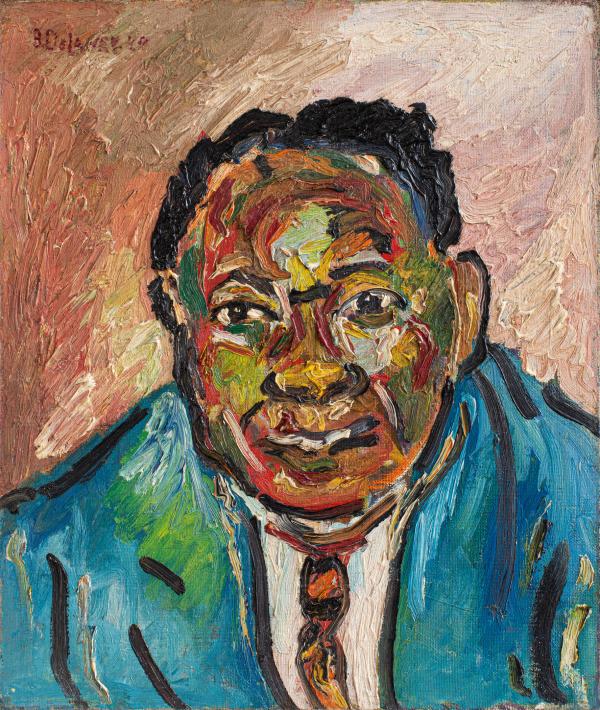American painter Beauford Delaney (1901–1979), considered one of the most important Black artists of the past century, painted this rare portrait of his friend, the well-known Jamaican-American writer and poet Claude McKay (1889–1948) in 1944 when both lived in New York. Delaney’s practice intersects with much of 20th-century American art: the Harlem Renaissance, the circle around modernists Alfred Steiglitz and Georgia O'Keeffe, American urban scene painting, and Abstract Expressionism.
Delaney’s Negro Man [Claude McKay] is an intimate portrait of one of the most influential figures of the Harlem Renaissance. Central to the movement were artists, writers, and intellectuals who represented a new, confident, and vibrant Black expression and self-determination. Many pioneering members of the cultural movement like Delaney and McKay were LGBTQ, including Richmond Barthé, Countee Cullen, Langston Hughes, Alain Locke, Bessie Smith, and Carl Van Vechten. McKay recorded his radical views on the injustices of Black life in America and his belief in the importance of Black autonomy through socialist revolution. Delaney and McKay regularly participated in gatherings where Romare Bearden, Ralph Ellison, Langston Hughes, Jacob Lawrence, Norman Lewis, Henry Miller, Bessie Smith, and Richard Wright were in attendance.
In Negro Man [Claude McKay], Delaney renders the writer’s pensive countenance with colorful, thick, expressive brushstrokes that delineate the contours and shadows of his face. Dressed in a bright blue jacket, McKay gazes directly at us; his upper torso fills the canvas, suggesting his powerful presence. Stylistically, the thick brushwork and intense colors reveal Delaney’s appreciation for both Van Gogh and the French Fauves. Working from direct observation and memory of his friend, Delaney’s psychologically engrossing portrait manages to capture his sitter’s temperament through details of clothing and expression, set against a textured abstract background.
In 1940, Delaney established a lifelong friendship with writer James Baldwin, who was then only 16 and was also gay. Baldwin moved to Paris in 1948, and Delaney followed five years later. He settled in Paris permanently, abandoning many works in his New York studio that have sadly been lost, making Negro Man [Claude McKay] exceedingly rare. Of Delaney, Baldwin later wrote: “I have always considered him to be my spiritual father, and as a man to whom I owe a debt that can never be repaid.”
It would take two decades after Delaney’s passing in 1979 for his work to gain increasing attention from artists, galleries and museums. Contemporary artist Glenn Ligon has long admired Delaney, writing: "I want to tell you how much I love your paintings, which occupy such a vital place in the history of postwar art and have been so meaningful to me personally, and how much I am in debt to them.” (From Glenn Ligon, "Two Letters," in Beauford Delaney and James Baldwin: Through the Unusual Door, published by the Knoxville Museum of Arts, 2020.)
Today his work is in great demand and is found in the collections of major museums in Boston, Chicago, New York, Philadelphia, San Francisco, and Washington, D.C. Acquiring this rare early portrait, which is the first Delaney in a Los Angeles museum, helps LACMA offer a more inclusive representation of mid-century American painting.
During our 36th annual Collectors Committee Weekend (April 22–23, 2022), members of LACMA's Collectors Committee generously helped the museum acquire nine works of art spanning a breadth of eras and cultures. We'll be sharing information about these acquisitions throughout the week here on Unframed.



